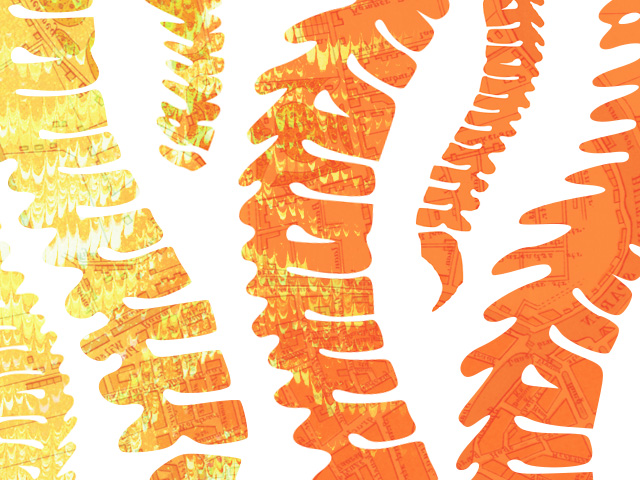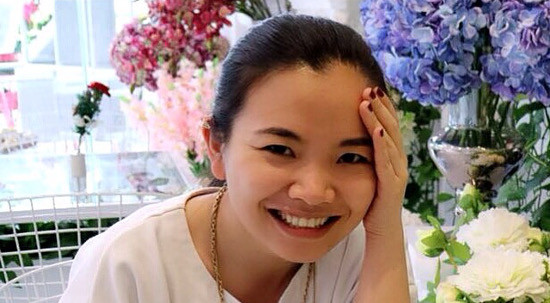Indo-Caribbean women bring to light an issue that used to be confined behind closed doors.

September 28, 2018
Early in the morning on January 1, 2018, New York City suffered its first homicide of the year. Twenty-six-year-old Stacey Singh was found stabbed to death in her own home in Richmond Hill, Queens, on 103rd Avenue near 113th Street. The body of her husband, 46-year-old construction worker Vinny Loknath, was found dangling from a tree hours later at nearby Forest Park. Neighbors told the Daily News Loknath had a history of assaulting Singh, and months earlier had been arrested, and charged with misdemeanor assault.
The couple was Indo-Guyanese, and the murder reverberated across the Indo-Caribbean community in Southeast Queens. Within this community whose unique history is sometimes glossed over even by other South Asians – descendants of Indian indentured laborers from Guyana and Trinidad, and some have argued the largest South Asian diaspora in New York City – conversations about gender-based violence had previously bubbled up after tragedies forced them. Those conversations had petered out, but this time, advocates believe, things could be different.

The busiest streets of these neighborhoods – Jamaica Avenue and Liberty Avenue – overflow with a mix of Indo-Guyanese beauty salons, matrimonial stores, pastel-fronted Hindu mandirs with opulent gold-colored signs sandwiched between the neighborhood’s mosques, halal butchers and Spanish delis selling pupusas. Long-time residents say domestic violence or DV has always been an issue here, one mostly spoken of behind closed doors. Attempts to talk about it have fizzled, funding has been slow to materialize.
In 2007, two murders of Indo-Caribbean women rocked the community. Natasha Ramen and Guiatree Hardat, both Indo-Guyanese women murdered by Indo-Guyanese men, are still fresh on the minds of advocates working on the issue today. But Singh’s death led to a new urgency among advocates, who believe a broad and honest conversation about the problem is emerging with renewed urgency.
But despite a dire need for domestic violence services that are culturally appropriate, nothing formal exists in the community. Instead, informal networks of community leaders or grassroots organizations like the Jahajee Sisters, an unstaffed organization whose members volunteer their time while working full-time jobs, have filled that gap. The approach of advocates is a mix of leadership development, community engagement, talk therapy and creative storytelling, with the goal of pushing the community toward an honest probing of inter-generational traumas woven into their history and daily lives.
***
Jahajees Rising
The Jahajee Sisters organization was founded in 2007 by Taij Kumarie Moteelall, Simone Jhingoor, Shivana Jorawar, and Vijai Kublall. Moteelall and Jhingoor had been doing arts and activism work with communities of color when Kublall, who is Moteelall’s mother-in-law, brought up the idea of focusing on gender justice work in the Indo-Caribbean community. Feeling a personal connection – Jhingoor says she was getting out of an abusive relationship herself when the group began – they began a series of conversations that led to the first Indo-Caribbean Women’s Empowerment Summit, a yearly conference for Indo-Caribbean women that is open to all. The group takes its name from Jahaji Bahen, a term of affection for women on indentured ships sailing from South Asia to the Caribbean.
“Some of these women had never talked about their experiences with anyone before, and it just needed to come out for their own healing. We became this space for people to finally speak their truth.”
They decided to focus on leadership development because, as they saw it, there were few community leaders, especially in the religious communities who were stepping up to deal with domestic violence.
The 2007 murders of Natasha Ramen and Guiatree Hardat were fresh on their mind, and they were frustrated by lack of conversation from men, mostly in faith communities.
“There was no outcry from our traditional community leaders,” Shivana Jorawar, another founding member, recalls. “Both of these were front page news, splattered across New York Post and Daily News, and yet the people who are kind of the caretakers of our community were not saying anything.”
What that singled out to them was that more of the leadership roles should be occupied by women, something they set out to foster.
The first Women’s Empowerment Summit drew 50 to 75 women, they estimate, and they shared their personal stories in earnest. It was a surprise, says Jorawar, who says she wasn’t sure if even 10 people would show up. The crowd was so eager to speak openly that they began sharing their stories about domestic abuse, she recalls, unprompted during an introductory exercise.
“Some of these women had never talked about their experiences with anyone before, and it just needed to come out for their own healing,”Jorawar says. “We became this space for people to finally speak their truth.”
The group has held women’s leadership institutes every summer from the past 10 years, and have added a program specific to Muslim women. Last year, they had their first six-month women’s leadership development institute.
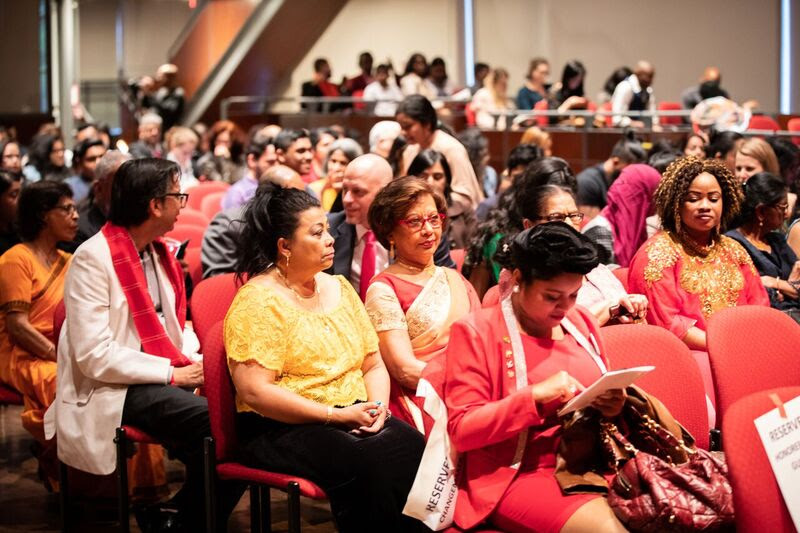
Much of the work centers on leadership development, including two-week summer programs called “young women’s institute” and a longer leadership program; planned to be six-months but extended to a year, where they train women to do public speaking, campaign building, and organizing.
There is also what Jorawar calls a “deep healing component.” Most of the women they work with are survivors of domestic violence, she says, either having first-hand experience or being in a household where they witnessed it. Particularly for women who are survivors, there is a lot of building of self-esteem and a lot of healing that must be done, and it takes work, time and resources to, as she puts it, “become their best boldest selves.”
To unearth these complex conversations from a sometimes reticent community, the group has used imaginative tools, blending performance and community engagement.
At this year’s Women’s Empowerment Summit, the Jahajee Sisters organization put together a play, written by co-founder Moteelall, to communicate some of their feelings about Stacey Singh’s death, as well as “engage the audience in imagining possibilities for change.”
Called “Jahajees Rising,” the play imagines an alternate present in which a woman named Savita Singh, an appellate meant to evoke the slain Stacey Singh, has survived the attack that ended her namesake’s life. While in a coma, Singh is visited by ancestors, women in her lineage who have experienced domestic violence for generations, from their time as indentured laborers in British Guiana to their ancestral origins in India. Singh awakes from her coma and, seeing that her daughter could inherit this trauma, leaves her abusive relationship. She and her daughter join Jahajee Sisters, and the play makes another time jump – this time seven generations into the future, into a world where gender-based violence no longer exists.

“What can happen seven generations forward, where we center healing and liberation?” co-founder Moteelall asks.
She intends to produce the play again and include a toolkit and curriculum that would open up a dialogue with the audience.
***
A Painful History of Violence
The focus on inter-generational healing that is at the center of the Jahajees Rising play stems from a painful history of violence against Indo-Caribbean women in Guyana. In colonies of Indian laborers, the rates of violence increased dramatically compared to the regions from which they were pulled. According to one study, Indian men killed their romantic partners at a rate 142 times greater in British Guiana than India’s Northwestern Provinces and Oudh, where most migrants originated. This history was written about most famously in scholar and journalist Gaiutra Bahadur’s landmark book Coolie Woman.
One theory about the violence in the colonies, put forward by Bahadur and others, was that a manipulation of the ratio of women to men in the colonies by British officials triggered already fragile patriarchal egos. Men toiling for hours in sugar cane fields with little to show for it were all the more resentful when spurned by the few available women, often for the attention of wealthier men. Bahadur writes in her book Coolie Woman how this phenomenon “appeared all across the map of indenture, like pushpins marking casualties in a bloody struggle by Indian men for scant beachheads of power.”
“It’s difficult to calculate how many Indo-Caribbean women experience domestic violence. Most domestic violence survivors do not report crimes, and even less in immigrant communities, for reasons stemming from economic and housing insecurity to immigration.”
This does not explain present-day violence in New York’s immigrant communities, where Guyanese women outnumber men, according to city data. But there are spiritual, economic and social ramifications to this and other traumatic history, advocates like Jahajee Sisters says, and learned behavior passed down through generations.
Indo-Caribbean attorney and advocate Aminta Kilawan, days after Stacey Singh’s murder, wrote in The West Indian that male domination and violence has carried across borders from the Caribbean to the United States. “It will take massive movement-building and a major culture shift to take all this,” Kilawan wrote. Even the limited programming geared toward South Asians in New York City historically has been slow to address the needs of the Indo-Caribbeans.
Jahajee Sisters’ Jorawar was a staff member at Sakhi, a domestic violence organization for South Asians in the mid-2000s. She noticed back then that the organization had no real outreach in the Indo-Caribbean community.
“I knew firsthand that domestic violence is a pervasive problem,” she says. Many women, she and other advocates say, feel that they can only speak about their problems with other Indo-Caribbeans, folks who understand their unique shared histories and culture.
The services provided by Sakhi are deep and varied, as are the needs. Most clients are below the poverty line, says Shyda Rashid, domestic violence program advocate at Sakhi, and economic marginalization leads to a range of problems in which men have the upper hand, including housing.
“The violence is emotional, financial, cultural,” Rashid says. Many of those who come to Sakhi are undocumented and are isolated. The more precarious someone’s connections, the more likely they’re financially dependent on a male spouse. The group connects them with counseling, shelter, job readiness, sometimes an emergency cash payment if they need it. They may also refer them to the Queens Family Justice Center, one of five city-run, borough-specific spaces that provide counseling and support for survivors.
“What we’ve seen is many women who are in DV situations tend to go to their faith institutions as a place of solace, to get support and advice, that’s still the comfort zone. It’s also one of the places where patriarchy is perpetuated by the way faith is interpreted.”
It’s difficult to calculate how many Indo-Caribbean women experience domestic violence. Most DV survivors do not report crimes, and even less in immigrant communities, for reasons stemming from economic and housing insecurity to immigration. Only 26.7 percent of intimate partner assaults are reported, according to 2000-2012 Justice department data. Of those surveyed who did not report their assault, 32 percent said they didn’t want police or courts involved, and 35 percent said they wanted to protect their attacker, their children or their relationship. Isolation is one of the factors that keeps women from reporting, as well as threats of deportation and housing insecurity, according to Rashid.
***
Reaching Out To The Faith Community
Because so much violence happens behind closed doors and many are reluctant to talk about it, advocates have realized it’s important to meet community members in the spaces they most frequent. Often these are religious spaces; most prominently the many mandirs that fill Richmond Hill and South Ozone Park. Formal spaces to congregate are hard to find in the Indo-Caribbean community, Kilawan says, and temples and mosques are default gathering spaces. The first Women’s Empowerment Summit in 2007 was held in Bhuvaneshwar Mandir, the same space that hosted a vigil for Stacey Singh in January.
“What we’ve seen is many women who are in DV situations tend to go to their faith institutions as a place of solace, to get support and advice, that’s still the comfort zone,” Moteelall of Jahajee Sisters says.
But the flipside of that is that pernicious structures are reproduced here: “It’s also one of the places where patriarchy is perpetuated by the way faith is interpreted,” Jorawar says.
“We know that a lot of the women who are our members, they’re very religious, they believe strongly, but they stopped going because of the messages about themselves and how it made them feel,” she adds.
Jahajee Sisters is working to partner with faith institutions that are open to collaboration to hold talk circles with congregants, Jorawar says, to shift the way faith is practiced and to make it, in her words, a more “feminist faith” that members can find hope in and feel good about.
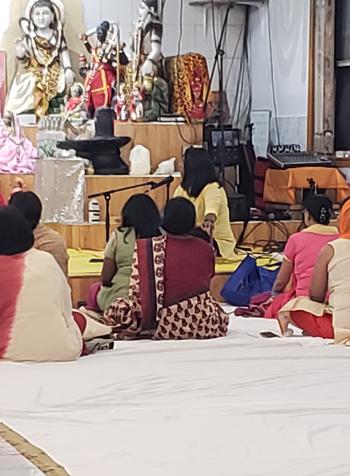
To handle their faith outreach work, the organization has enlisted Pratima Doobay, a religious leader who considers herself a “priest in training.” Pratima has seen first-hand how sometimes religious spaces don’t have a framework for domestic violence. Her father is a pandit, Mahendra Doobay, and for years Pratima has led services at her father’s temple, Bhavaanee Maa Mandir.
Since she was a child, she has witnessed many times when a woman came to her father for counsel after being battered, and rather than encourage the women to leave their abusive partners, he encouraged them to stay work things out.
“His justification is according to scripture, we don’t believe in divorce, separation, we believe in hashing it out,” Pratima says. She counters with her own scriptural references to show how untenable these old rules are.
“There’s no law against a man hurting his wife. But there’s a law against women or men leaving each other? I don’t understand. So that’s the debate between him and myself,” she says.
Pratima Doobay eventually got into the habit of reaching out to the same women who were coming to her father for help, letting them know what resources they can have, and telling them about Jahajee Sisters. Her father, despite being reluctant to make these kinds of interventions, is supportive of Pratima doing so in his stead.
“I can’t say that to these women,” Doobay says her father told her, “but if you feel the need that you have to say that as a woman, then you go ahead and say that.”
She says that this is part of a larger trend among Indo-Caribbean faith leaders, who shy away from addressing domestic violence. And generally the women – who find her either through networks of other women or find her privately and then reach out over Facebook – often don’t want other members of the community or religious leaders to know what’s going on.
“It’s a very hush-hush kind of thing,” she says. “They don’t want the spiritual leaders knowing that they’re reaching out to me.”
To Doobay, the issue of domestic violence is not something that should only be discussed outside of faith circles; she views the issue as a deeply spiritual one and has centered her practice, philosophy and community approach around this.
“When a woman is being assaulted,” she says, “they’re breaking their spirit, they’re breaking them. That means that they might feel that they don’t even have a purpose if they’re beaten down so badly. Who wants to live in a world where we walk among so many people like that?”
She believes in the same way that Jahajee Sisters does, that the root of the crisis is inter-generational trauma and pain, and that only by trying to understand how men in the community have been socialized, and getting them to address it, will the problem be solved.

A suggestion she puts forward is to provide a space where men who batter, or condone similar behavior, be held accountable to a community and have their behavior questioned. The solution, she says, fits the community’s needs better than solutions that revolve around courts and cops.
Many times, she says, calling the cops can make the situation worse for women, who must return home sometimes and receive worse abuse. And for many women, traditions, customs, and deeper social bonds might lead them to want to seek therapy for their spouses and eventual reconciliation, rather than an end to a relationship.
It’s not something Jahajee Sisters views as ideal – in the Jahajees Rising play, the stand-in for Stacey Singh was mended emotionally and spiritually, empowered to leave her abusive relationship, and the sisters say fostering this kind of confidence and healing in women is their first priority. But Doobay and other advocates concede staying with a spouse who abuses is a difficult decision that is not in their hands.
“For so many reasons that include shame, they don’t want to leave their husbands. They would rather stay and work it out and just hope that their husbands change for the better,” she says.
She wants to ask men who abuse why they think it’s okay, and to raise the consequences of their actions both among their partners and within the community; the physical harm, the emotional toll, the social cost.
“The pattern that emerges is that men believe they aren’t performing masculinity correctly unless they are enacting some kind of violence, and the person on which it falls is someone who can’t fight back.”
The end-goal should be to make them aware of the deep roots of their behavior and to put even these men, should they be willing, on a path to healing, by awakening them to how it’s a psychologically-embedded problem “that trickles down from generations.”
The violence transmits often in the form of abuse, Doobay says, passed down among men, leading to psychological problems and depression.
She offers an example from her own life: “My dad, it’s like he suffers from depression,” she says, “I know the kind of upbringing he had where his dad was extremely abusive, not only to his mother but to him and his siblings, and that’s something that happens to a lot of people.”
Through her conversations with survivors and those who’ve inflicted harm, she says the pattern that emerges is that men believe they aren’t performing masculinity correctly unless they are enacting some kind of violence, and the person on which it falls is someone who can’t fight back.
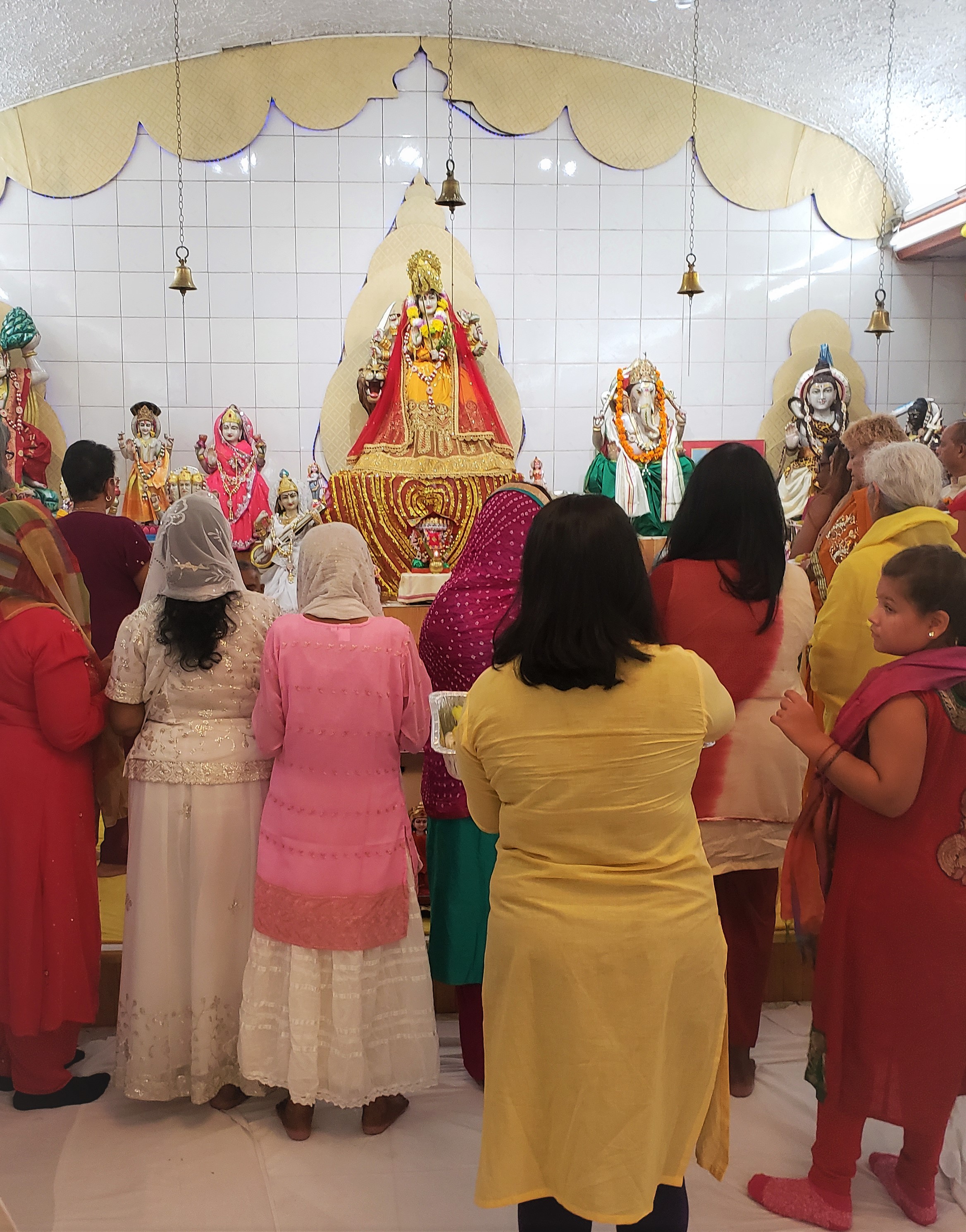
“They start to question themselves: ‘Why am I not behaving like this, why am I not asserting myself as a man,’” she says men have told her, and they conclude “to assert myself as a man is to be abusive.”
But in the religious community, Doobay believes, priests need to take the role more seriously as one that intersects with that of a social worker and to become trained and certified as counselors, a reality many shy away from.
The path should lead to a mutual, cooperative healing, she says. “Congregational healing doesn’t mean singing bhajans and pujas,” she says, referring to Hindu religious chants and songs, “it means reaching out to your community when they are really suffering and in pain, and uplifting them in any way possible.”
***
Cultural Shifts
There is a hope that the culture is slowly shifting. But in the hours after the murder of Stacey Singh, the conversation online was disturbing, lawyer and advocate Kilawan says.
“There was a lot of victim-blaming,” she says, something she alluded to in her editorial about Singh’s death for The West Indian.
In comments on Facebook in the days after the murder, Kilawan saw blame placed on Stacey Singh, often from people who had never met her but had seen her photo in the paper.
“People were saying she has red hair, what do you expect?” she says. They brought up the fact that she and her husband had just been arguing at Maracas Nightclub before the murder, suggesting something about her lifestyle, presentation, or behavior was to blame.
But over the past year, Kilawan has seen small shifts in the conversation and moments of realization from community members that give her slivers of hope.
“I think community members overall are a lot more receptive to (discussion about) her death than many of the others that occurred,” she says.
Singh was young and had two small children, aged five and one, and Kilawan feels these facts made her story gain more sympathy from the community. But she also fears that the momentum could die down and that funding for grassroots and culturally-specific programs that are needed will be slow to manifest, and the cycle will continue.
“I wonder if we had gotten funding in 2008, or 2009, 2010, or even 2016, would that have happened? Would we have been able to do the work, to make it so that her partner knew that what he was doing was unacceptable, to make it so that the people around him had held him accountable?”
Immigrants from Guyana and from Trinidad have above-average incomes for immigrants across the city, according to American Community Survey data, though that number trails immigrants from India. But the neighborhoods of South Ozone Park and Richmond Hill are under-resourced, and culturally-specific programming for Indo-Caribbeans gets scant attention from the City Council.
“Richmond Hill Queens is extremely, extremely under-serviced,” Jorawar of Jahajee Sisters says.
New Yorkers frequently turn to their Council Members to fight for resources on their behalf, but from 2011 to 2017, the district in which South Ozone Park and a large portion of Richmond Hill was represented by Ruben Wills, who was convicted for stealing $30,000 of city funds last summer. The now former Council Member was indicted back in 2014, and residents say he was rarely seen at City Hall or in the community for years as the investigation progressed.
The issue of funding took center-stage in the political campaign of Richard David, an Indo-Caribbean community board member who ran to replace Wills after the latter was finally booted out of the City Council last year. David lost the Democratic primary to current Council Member Adrienne Adams. Jahajee Sisters says Adams has been very supportive of their work, a sign that things may be incrementally improving.
Jorawar says it does not help that there is sometimes a conflation of under-resourced communities and other more economically-mobile and visible South Asian communities. She points out that many in Richmond Hill are recent immigrants, and some first- and second-generation Indo-Caribbeans are under-educated – Richmond Hill High School has a graduation rate 51.9 percent in 2015, below that year’s city average of 67 percent. Most of the graduation rates within District 28 hover around this number.

“The vision is to have a multi-service agency where young people can get leadership training, have access to social service support, housing assistance, immigration assistance,” Jorawar says.
The group has been taking strides toward that vision; they recently wrapped up a year-long leadership and empowerment institute, a training program intended to build up women leaders in the community. The 15 women who completed the programming, which met mostly on the weekends and was bookended by out-of-state retreats, will help them set up monthly inter-generational women’s meetings called “Sister Circles” in participating religious spaces. They are starting with two Hindu temples – one of which is Bhavanee Maa, where Pratima Doobay helps lead worship – and will expand to masjids, churches, and other faith spaces.
There have been bright spots in funding, too: they received a small grant from the Queens Borough President, as well as a grant from Councilmember Adrienne Adams. They are also excited about a grant from the New York Women’s Foundation, a philanthropic organization that funds grassroots, community-led programming by women in the five boroughs.
But the funding needs are deep if the group is to be staffed and sustainable long-term. The precariousness of funding has weighed heavily on Jorawar, and she is sensitive to how possibilities are diminished, lives potentially cut short.
“I wonder if we had gotten funding in 2008, or 2009, 2010, or even 2016, would that have happened?” Jorawar asks, referring to Singh’s death. “Would we have been able to do the work, to make it so that her partner knew that what he was doing was unacceptable, to make it so that the people around him had held him accountable? So that he stopped that behavior, or that people around her had the courage to pull her out of the situation, or that there were resources for her to use so that she and her babies could be economically viable and stable on their own, without having to depend on him?”

Many of these possibilities are explored in the Jahajees Rising play that was performed at this year’s Women’s Empowerment Summit.
Towards the end of the play, as the story shuttles forward seven generations, a Pandita, a woman priest portrayed Doobay, leads her temple in a conversation about domestic violence.
Doobay says after portraying a futuristic version of herself in the play, she started to integrate these types of conversations into services she leads at Bhavanee Maa Mandir. She is optimistic that there will be more conversations of this type to come, in spaces where they aren’t happening now. She thinks that easing people into conversations is critical.
“Wherever I go, if I’m able to make people feel safe by what I’m saying,” she says, “I feel their perceptions are going to change.”


